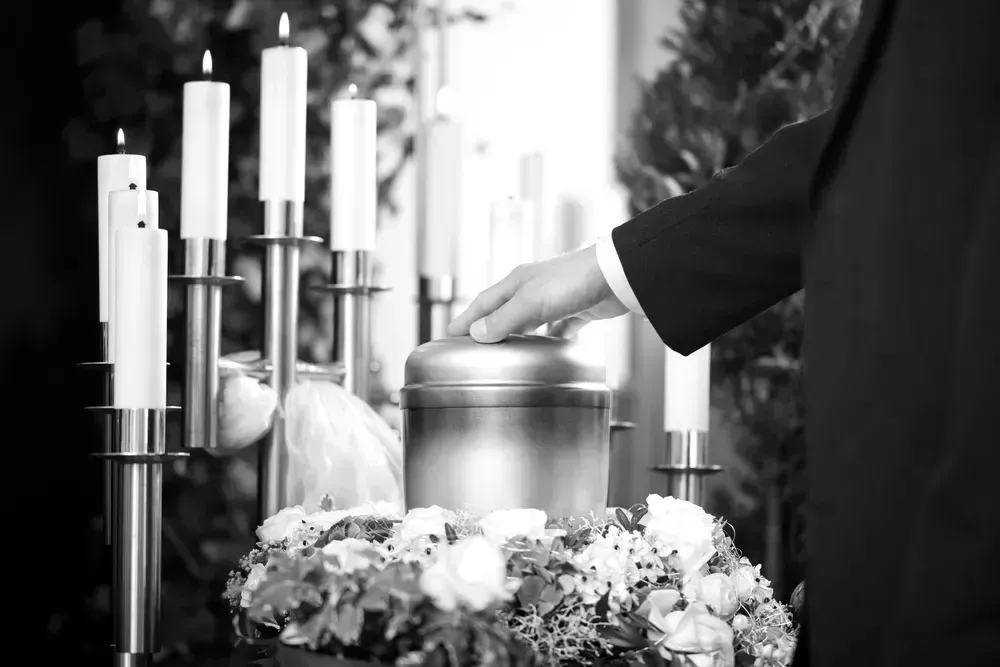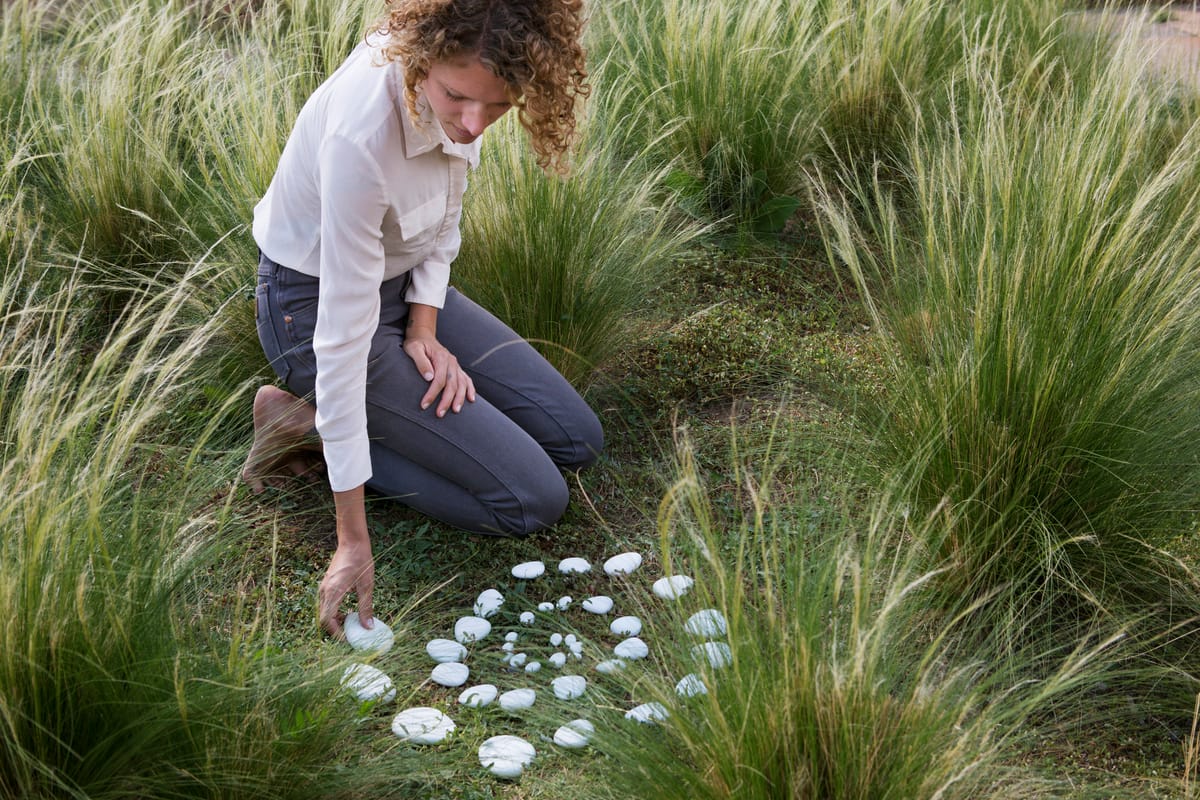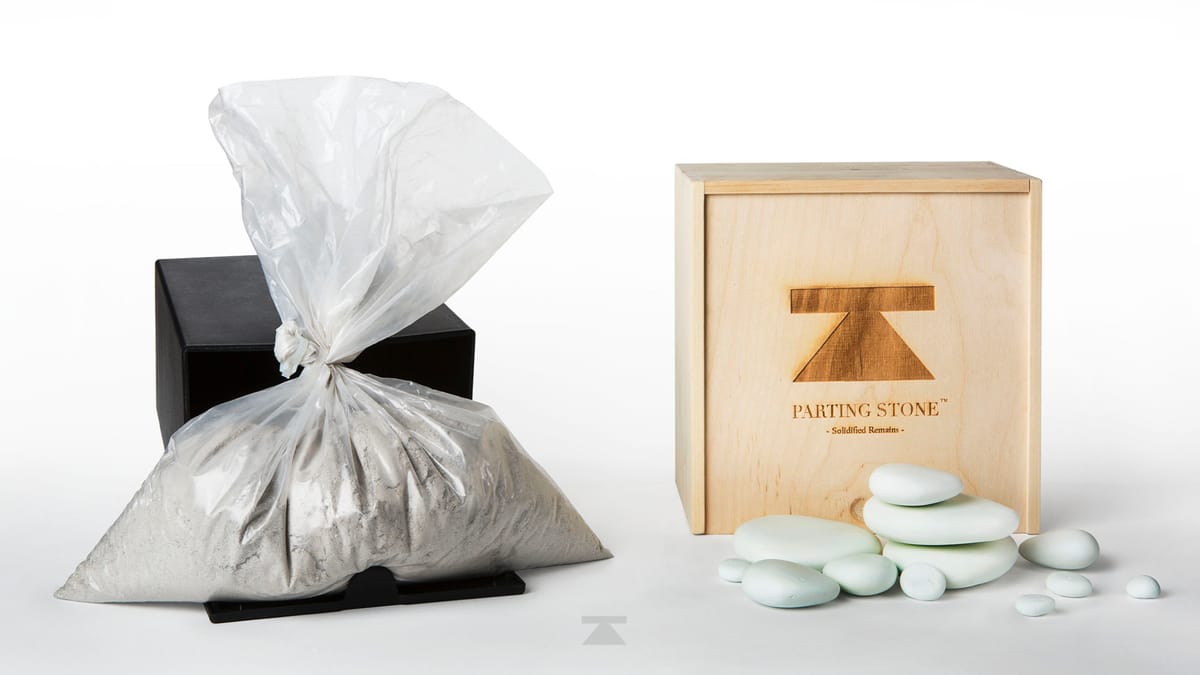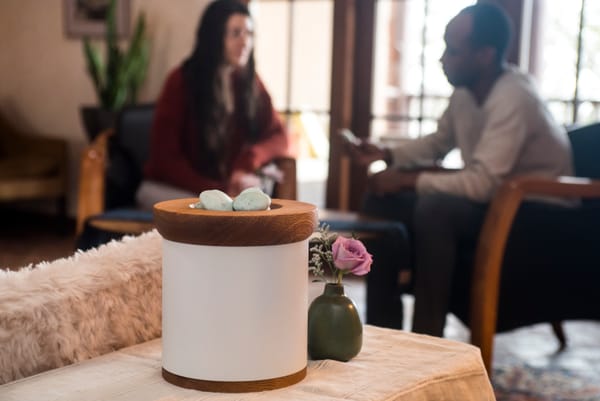The Real Problem No One Talks About: What Cremated Remains Actually Feel Like to Live With
Urns, jewelry, or stones? Compare 2025’s most meaningful memorial options to discover which best preserves your loved one’s presence in your life.

Seventy-five percent of families keep cremated remains for over two years without knowing what to do with them. The reason isn't what most people think.
It's not about finding the "perfect" memorial or having enough time to decide. The problem is that cremated remains in their original form often create more anxiety than comfort. They're messy, feel cold and clinical, and make sharing among family members awkward and stressful.
If you're reading this, you understand that weight. The profound responsibility of honoring someone who meant everything to you, while dealing with remains that don't feel like them at all.
Reflections on love, loss, and the ways we carry them.
In my years of grief counseling, I’ve seen how often families delay decisions about cremated remains. It's not from indecision, but from quiet distress. Ashes, though sacred, can feel fragile and clinical. One client once told me, “It feels like I’m keeping him in a state of unrest.” That sentence stayed with me.// The article captures a truth many are too shy to name: traditional options like urns and jewelry try to contain grief, when what we need is a way to connect with it. The innovation behind solidified remains offers something profound—comfort through touch. Smooth, warm, tangible. A way to hold, not handle, a loved one’s memory.// I recall a widow in my practice who couldn’t bear to open the urn that held her husband’s ashes. When she later received his solidified remains, she wept, not from pain, but relief. “It feels like he’s home,” she whispered.// Parting Stone’s process recognizes that healing is sensory as much as emotional. The goal isn’t to replace ritual, but to restore peace. Because grief softens when memory feels close enough to hold.
Cathy Sanchez Babao
Parting Stone Grief Coach
Why Traditional Options Leave Families Stuck
The memorial industry offers two primary paths: urns and cremation jewelry. But here's what families discover: each option was designed to work around the fundamental problem of cremated remains, not solve it.
Traditional approaches assume you're comfortable keeping remains in their original form. They focus on containers, settings, and storage solutions. But what if the real issue isn't where to put the remains, but the form the remains are in?
The Anxiety Factor Most Families Don't Expect
Research in grief psychology shows that meaningful memorialization supports what therapists call "continuing bonds." But many families report the opposite experience with traditional cremated remains:
- Anxiety about spilling or mishandling them
- Discomfort with their texture and appearance
- Stress about dividing them fairly among family members
- Guilt about not wanting them displayed prominently
- Fear of traveling with or relocating them
This isn't a reflection of love or respect. It's a normal response to remains in a form that feels foreign and anxiety-provoking.
Understanding Your Current Options
Let's examine what's actually available, the problems each approach solves, and the limitations families encounter.
Memorial Urns: The Storage Solution
What they solve: Urns provide a dignified container and focal point for remembrance.
The limitations: Urns assume you're comfortable with cremated remains in their original form. They require:
- Dedicated space and careful handling
- Someone to inherit and maintain them long-term
- Family consensus on single-location storage
- Comfort with the clinical appearance of traditional remains
Who this works for: Families with one primary decision-maker, permanent residence, and comfort with traditional cremated remains.
Typical cost: $70-$3,000+
Timeline: Immediate
Cremation Jewelry: The Symbolic Solution
What they solve: Jewelry allows discrete, portable connection using small symbolic amounts.
The limitations:
- Only uses tiny portions (less than 5% of total remains)
- Requires decisions about the remaining 95%
- Limited sharing capability among multiple family members
- Requires standard jewelry maintenance and care
Who this works for: Individuals seeking daily, private connection who have other plans for the majority of remains.
Typical cost: $25-$20,000+ (depending on whether you choose simple jewelry or cremation diamonds)
Timeline: 2-4 weeks for jewelry, 5-18 months for cremation diamonds

A Complete Alternative to Ashes: Solidified Remains
What if the problem isn't finding the right container or keepsake, but the form of the remains themselves?
Now when you choose cremation, you have two options:
- Cremated remains (conventional ashes)
- Solidified remains (Parting Stone)
What Solidified Remains Are
Solidified remains are a new form of human and pet remains. We invented a complete alternative to ashes, not an addition to cremation.
Through our scientific solidification process, we transform the vast majority of cremated remains into 40-80 smooth, natural-looking solidified remains that can be held, shared, and cherished.
Why this matters: Many families discover they weren't looking for a better container or storage solution. They were looking for remains in a form that feels comforting rather than anxiety-provoking.
The experience difference:
- Solidified remains feel warm and natural to hold rather than cold and clinical
- They're durable enough for handling without fear of spilling
- Natural appearance integrates beautifully into homes and gardens
- The full amount becomes shareable without complicated division
Who This Works For
Families seeking a fundamental alternative to traditional cremated remains, those with multiple family members who want meaningful shares, and anyone who finds traditional remains anxiety-provoking.
Typical cost: $2,495 for complete transformation
Timeline: 8-10 weeks for processing
How Families Are Finding Peace
The families who find the most peace aren't necessarily choosing the most traditional option or the most expensive one. They're choosing the approach that solves their actual problem.
When Storage Solutions Work
Some families genuinely prefer traditional remains and simply need an appropriate container. Sarah chose a handcrafted wooden urn for her father because their family values traditional approaches and has a permanent family home where the urn provides a comfortable focal point for remembrance.
When Symbolic Solutions Work
Others need portable connection but have plans for the majority of remains. David chose a cremation diamond for his wedding ring because he travels extensively for work and wanted his late wife "with him" during daily life, while his stepdaughter kept the majority of remains in an urn.
When Transformation Solves the Real Problem
But many families discover their issue wasn't storage or symbols. It was the form of the remains themselves.
Garth Clark chose solidified remains for his parents and shared them among family members. "Getting these has been sort of transformative," he shared. "I use them as a sort of worry bead."
Catherine, who received her husband's solidified remains, wrote: "When they arrived I felt a calm throughout my body that I haven't felt since I lost him. Knowing I can have him with me puts me at peace whenever I leave the house."
Ketra found the transformation particularly meaningful: "It's like it's my mom—it's tactile, solid, it has a color to it. It's not like a vase on the shelf. I feel like I have them in the room with me, and it's beautiful."

Side-by-Side Comparison Table
| Feature | Memorial Urns | Cremation Jewelry | Solidified Remains |
|---|---|---|---|
| Remains Capacity | Full amount (100%) | Symbolic amount (<5%) | Full amount (100%) |
| Shareability | Single location | Individual pieces | Multiple stones for sharing |
| Portability | Stationary | Highly portable | Moderately portable |
| Durability | Material dependent | Requires care | Ceramic-like permanence |
| Cost Range | $70-$3,000+ | $25-$20,000+ | $1,695-$2,495 |
| Setup Time | Immediate | 2-4 weeks | 6-8 weeks |
| Maintenance | Minimal | Standard jewelry care | None required |
| Display Flexibility | Single focal point | Personal wearing | Multiple display options |
| Family Conflict Risk | Higher (single location) | Medium (limited quantity) | Lower (multiple shares) |
| Travel Capability | Difficult | Excellent | Good |
| Memorial Longevity | Material dependent | Wear concerns | Permanent |
Making a Decision That Brings Peace
The right choice isn't about which option sounds best in theory. It's about which one solves your actual problem.
Ask yourself honestly:
About the current situation:
- How do you feel when you think about the cremated remains?
- What would make you feel most at peace?
- What concerns you most about the current form they're in?
About your family:
- Who needs access to meaningful remembrance?
- How might you reduce rather than create family stress?
- What would help everyone feel included?
About the long term:
- What feels sustainable for years to come?
- How important is immediate availability versus meaningful transformation?
- What would your loved one want for your peace of mind?
A New Alternative When Traditional Options Don't Feel Right
For families who realize their problem isn't storage but the form of remains themselves, Parting Stone offers complete transformation into solidified remains through our solidification process.
We invented this new form of remains because we recognized what families were really struggling with: remains in a form that creates anxiety rather than comfort.
Our process:
- We send you a collection kit for secure shipping
- We transform the cremated remains into 40-80 solidified remains using our scientific solidification process
- We return your loved one in a form that feels natural to hold and beautiful to keep (8-10 weeks total)
What makes this different:
- No more loose remains to worry about spilling
- Natural appearance that's beautiful in any setting
- Durable enough for daily handling and touching
- Easy sharing among family members without complicated division
- Return-to-ash guarantee if you're not completely satisfied
Over 10,000 families have found peace through this transformation. We're here when you're ready to explore whether solidified remains might be the solution you've been looking for.
Ready to learn more?
There's no timeline for grief, and there's no rush to make decisions. We're here to support you whenever you feel ready to take the next step toward the peace your family deserves.








